SOUTHAMPTON VILLAGE WALKING TOUR
Main Street > Meeting House Lane > Jobs Lane > South Main Street
_______________________________________________________
Main Street
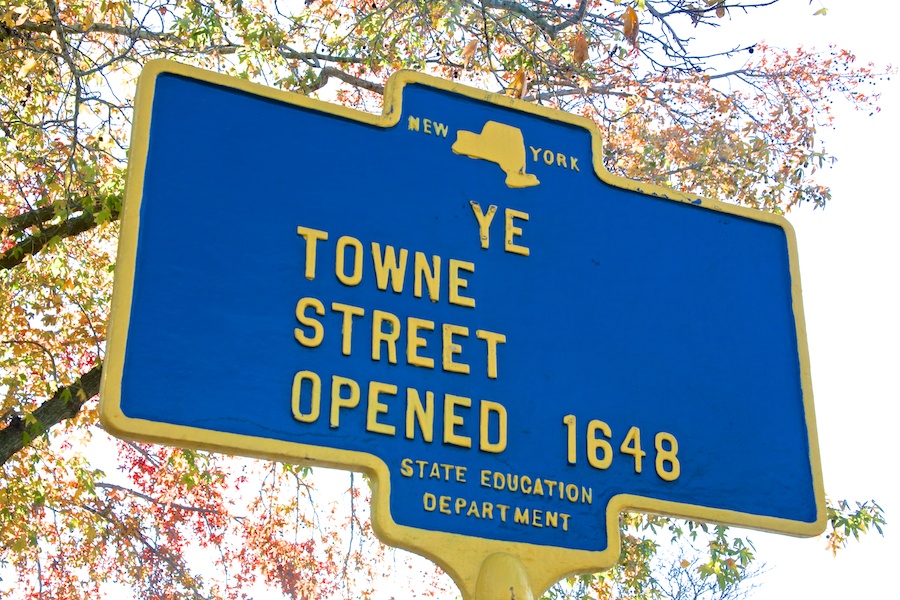
——————–

Southampton Town Hall was dedicated on June 12, 1925. William A. LaFon was the architect; Duryea & Baird was the contractor and did the mason work.
———————————————————————————————————-

Morris Studio, since 1892. Archival photograph courtesy of Southampton Historical Museum.
The Morris Studio opened on the east side of Main Street in 1897. George Morris had previously rented a studio on the west side of Main Street after arriving in Southampton in 1892. The new building was constructed according to his wishes. In the late 1920s it was moved a few feet to the north of its original site. The business, still in operation, was in the hands of the Morris family until the late 20th century.
———————————————————————————————————————–
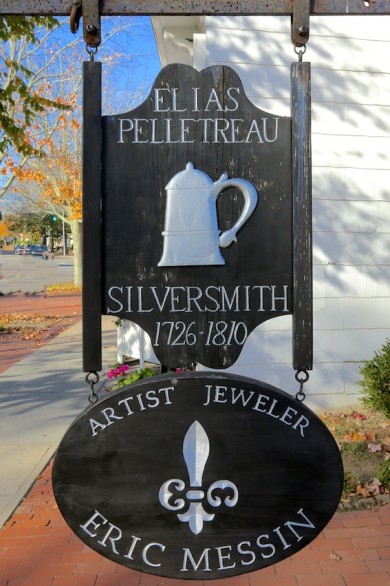
Elias Pelletreau Silversmith Shop
Captain Elias Pelletreau (1726 – 1810): famous colonial gold and silversmith and Revolutionary War patriot, established his goldsmith and silversmith shop in Southampton shortly after completing his apprenticeship in 1748. His son John (born 1755) and grandson William (born 1786) practiced the same craft in this shop. Restored and maintained by the Southampton Colonial Society and the Southampton Historical Museum. — Plaque on site.
Visit: Southampton Historical Museum
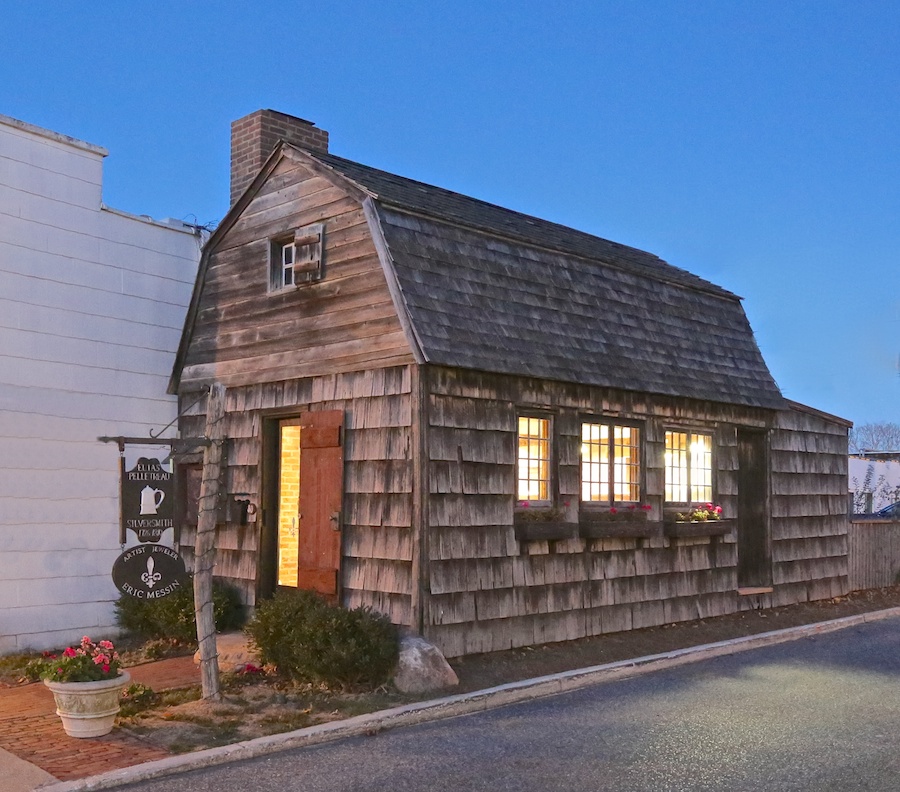
Pelletreau Silver Shop, built in 1686. Visit: AAQ’s Landmarks — Pelletreau Silver Shop
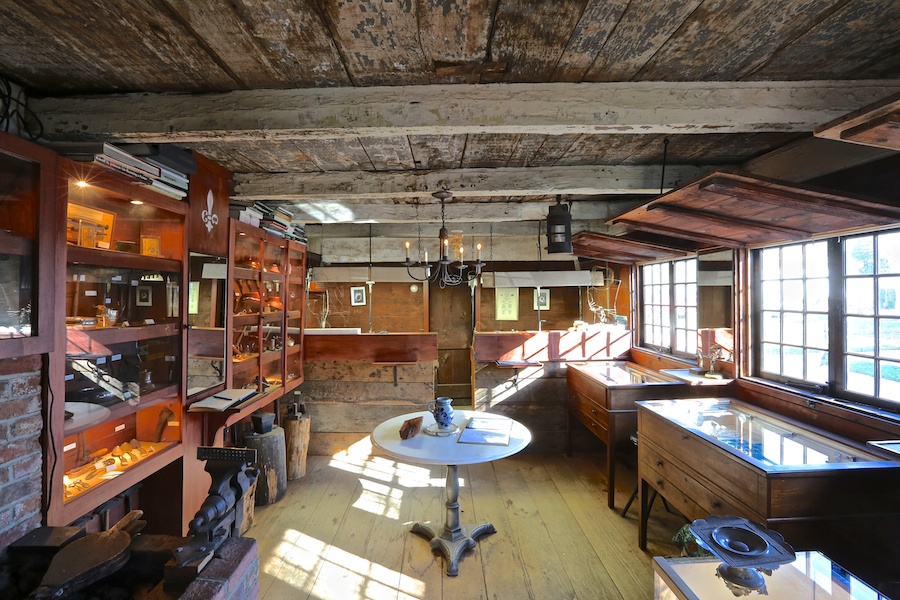
————————————————————————————————-

First National Bank, circa 1920.
On June 1, 1920, the First National Bank of Southampton moved into its new building on the corner of Cameron and Main streets. After receiving its charter in 1912, it opened its doors in the building at the corner of Main Street and Wall Street, which was altered for restaurant use, most recently Barrister’s. In 1931 the building at 60 Main Street was enlarged and modernized. The Chase Bank, its current occupant, has made substantial changes to the interior.
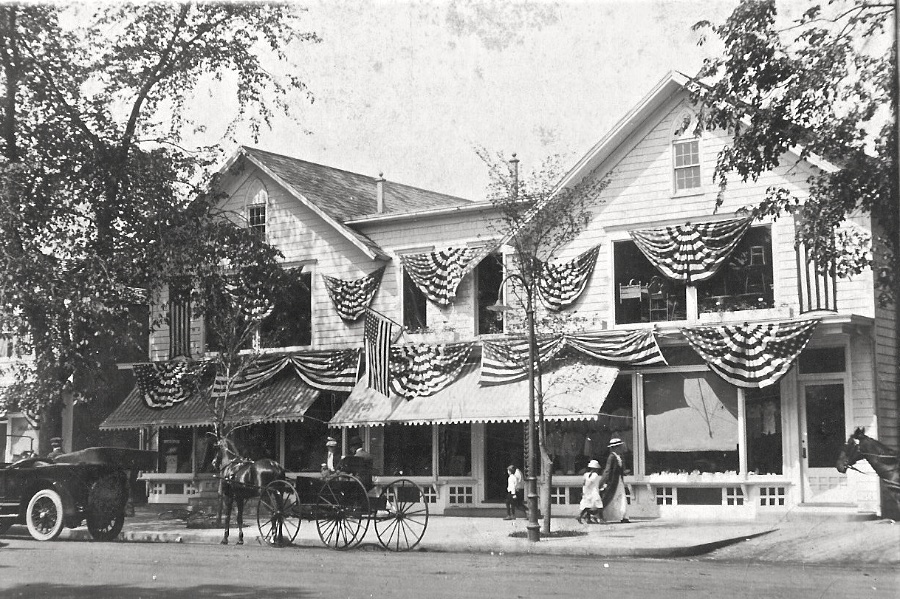
Hildreth’s Department Store – Established in 1842, it is America’s oldest department store. Archival photograph.
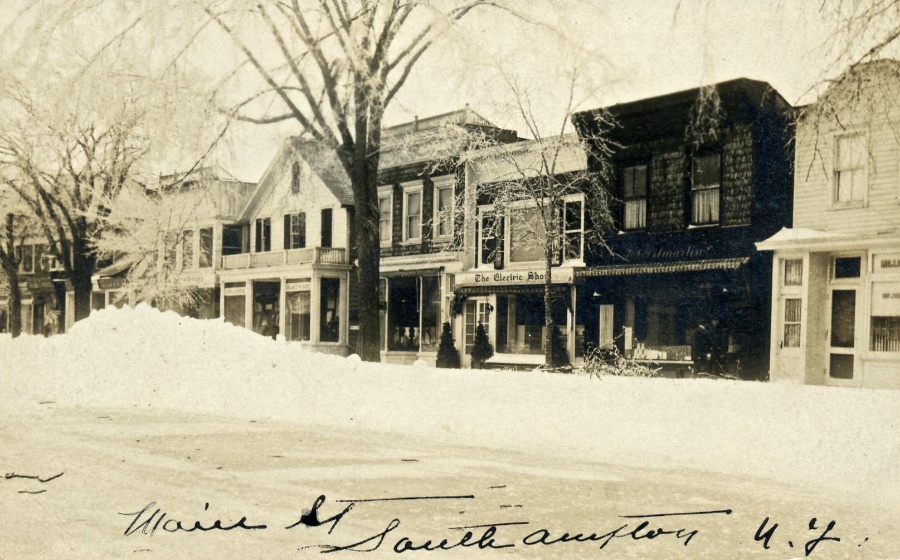
Archival postcard, Woodward Collection — Visit AAQ/Portfolio/Preservation — Woodward Local Postcard Sampling

Herrick Hardware – 41 Main Street
Herrick’s is one of Southampton’s oldest commercial businesses and its building remains relatively unaltered since before 1858. An 1858 map lists it as “store and Post Office; in 1873 it is identified as “H.F. Herrick Store”; in 1902 as “B.F. Herrick” and in 1902 simply as “Herrick.” A 1912 publication notes that the store was no longer handling toys and was devoting itself to “a full line of shelf and builders hardware.” Copy & archival photograph courtesy of Southampton Historical Museum.
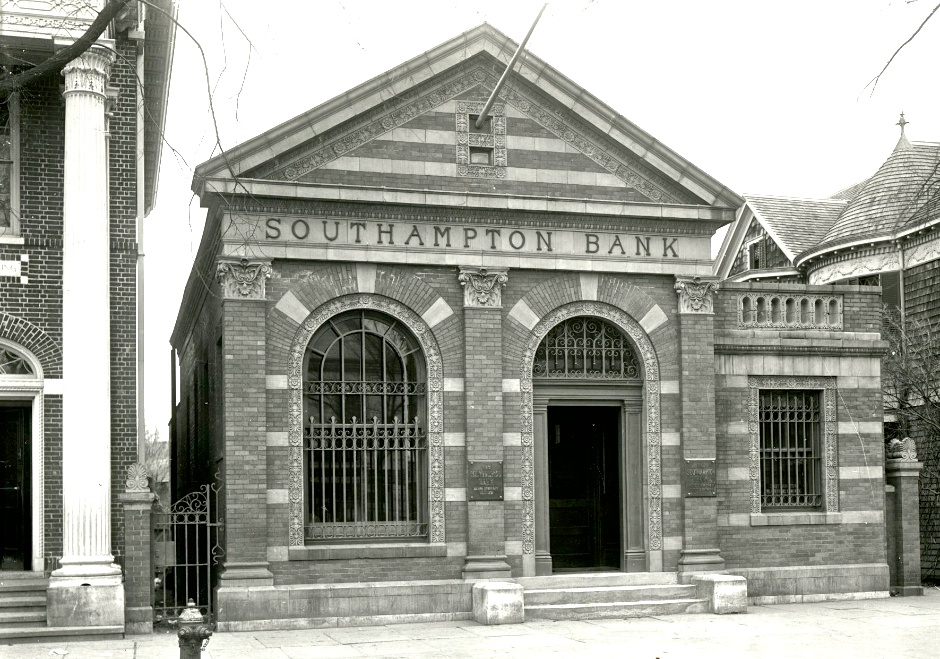
Southampton Bank, 25 Main Street
The village’s first bank, the Southampton Bank was capitalized at $25,000 when it opened in rented quarters on Jobs Lane in 1888. By 1895 its success merited a move to Main Street and a new building designed by R.H. Robertson, who was also the architect of the original Rogers Memorial Library and of many prestigious buildings in New York City. A bank brochure from 1921 declares the bank building “a model of modest architecture, many features of which have not and could not be improved.” In fact, the building that survives is unrecognizable, having lost its pediment and acquired a dazzling coat of white paint, among other changes. It now houses Waldman, Inc., purveyor of jewelry and antiques. Copy & archival photograph courtesy of the Southampton Historical Museum.

Southampton Post Office – Archival postcard.
Village Hall was erected in 1910 after voters approved the project. Eight architects were invited to submit plans and F. Burrall Hoffman, a nationally known architect who summered in Southampton, won the competition. A bond issue of $25,000 was approved and the firm of Donnelly and Corrigan submitted the winning bid for construction.
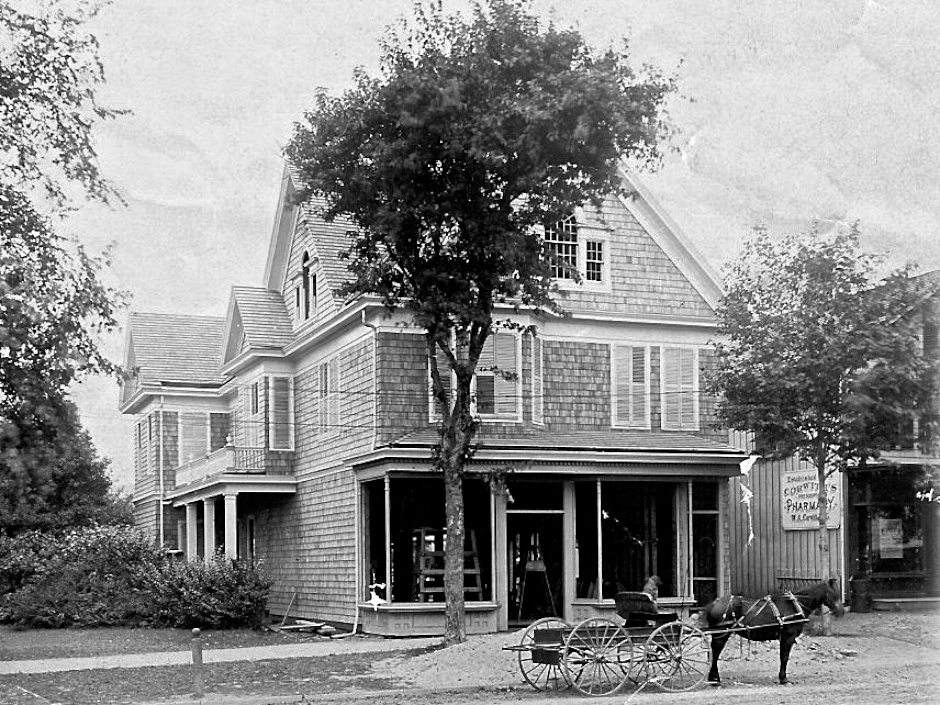
Corwith’s Pharmacy. Archival Photograph.
Built circa 1901, the building near the corner of Jobs Lane and Main Street housed Corwith’s Pharmacy for more than a century. The business was launched even earlier in 1844 by Caleb Corwith. The 1901 structure boasted an impressive interior with hand-carved woodwork and elegant fixtures. Later a soda fountain was a popular attraction. C-Wonder, its present occupant, retains few reminders of its earlier interior though the exterior has kept the same lines.
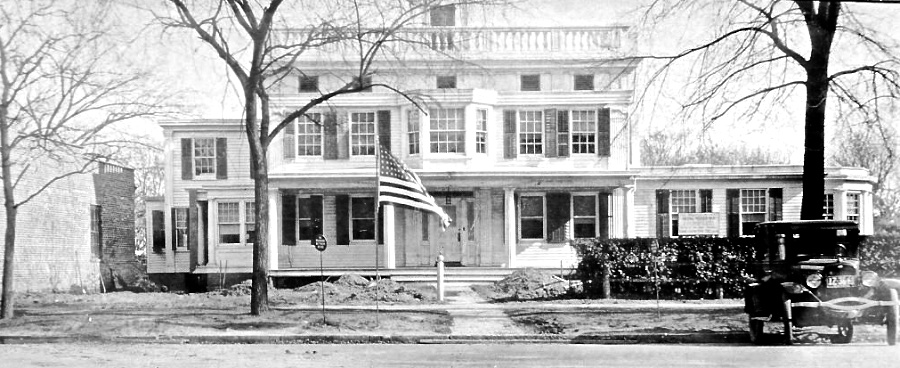
Rogers Mansion, view from Main Street. Archival photograph.

Rogers Mansion as seen through Arcade. Archival photograph [detail].
—————————————————————————————-

Main Street intersection at Meeting House Lane. First Presbyterian Church on southeast corner. March 15, 2014.
>>>>>>>>>>>>>>>>>>>>>>> | >>>>>>>>>>>>>>>>>>>>>>>>
Meeting House Lane

Rogers Mansion
William Rogers purchased the property in 1648 and was owned by a Rogers descendent until 1880. The most prominent family member was whaling Captain Albert Rogers, who, in 1843, added a Greek-revival style addition onto an earlier farm house. The Captain had become newly rich, like many other Southampton business men, in the flourishing whaling industry which came to a sudden halt in 1847 due to the decimated whale population and over production of whale products. The classical style façade has Doric columns on the porch, an ornamental balastrude, and a belvedere (or widow’s walk). This type of house can be seen throughout the Hamptons and were almost always built from fortunes made in whaling. After a brief tenure by the Nugent family, Samuel L. Parrish purchased the property in 1899 and quickly added additions to the structure in the Colonial Revival style. Mr. Parrish, a very successful New York City attorney, was one of the first of Southampton’s summer colonists who began spending summers in Southampton in the 1880s to escape the heat of the City. The Mansion contains period rooms, an extensive toy collection, and temporary exhibits on local history and culture. Stanford White designed many of the renovations made in the early 20th century.
Visit: Southampton Historical Museum
Visit AAQ/Landmarks: Rogers Mansion, 1750 – 1926, Southampton
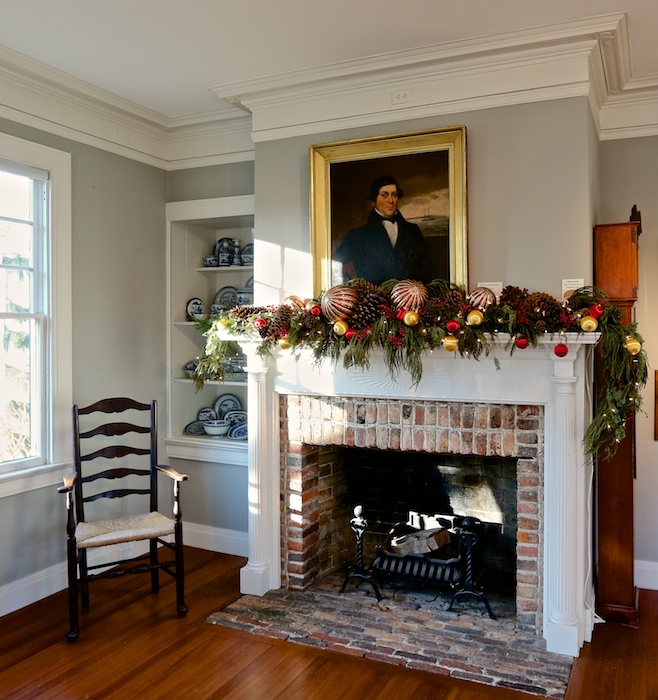
Portrait of Captain Albert Rogers.
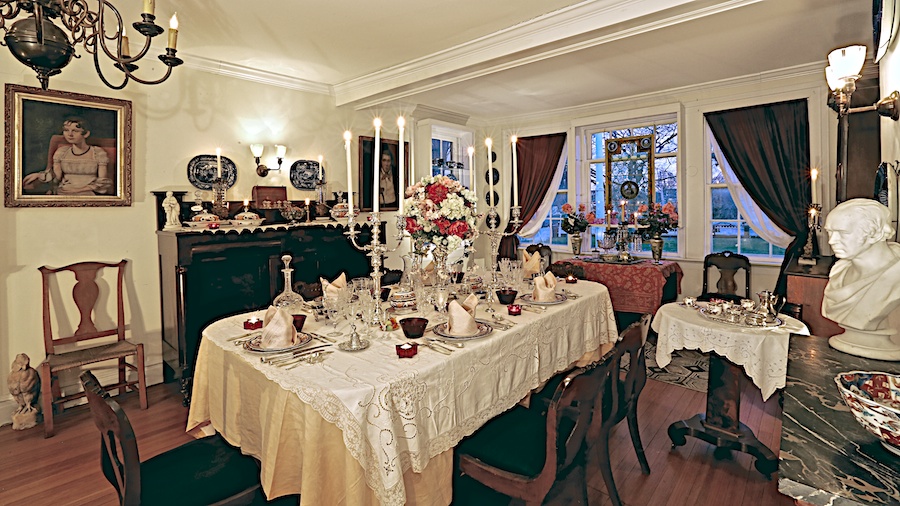
Dining Room, Rogers Mansion.
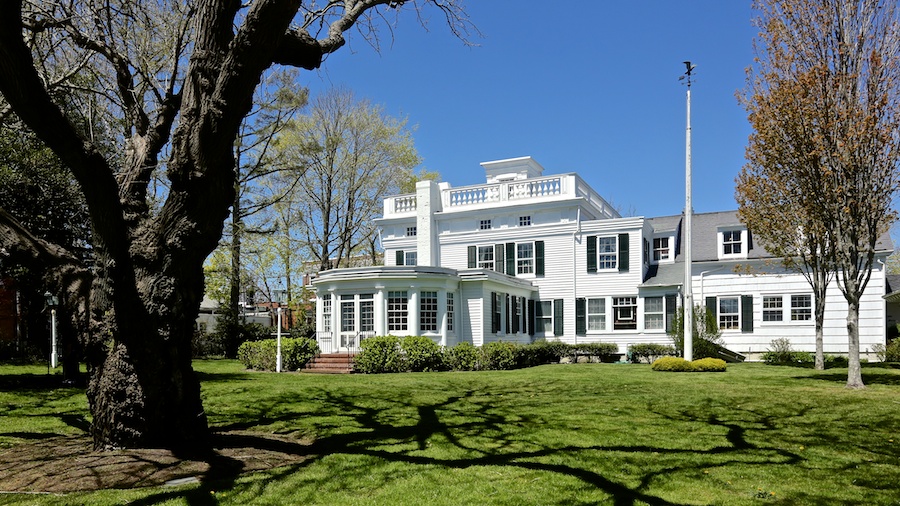
South elevation, Rogers Mansion.

——————–
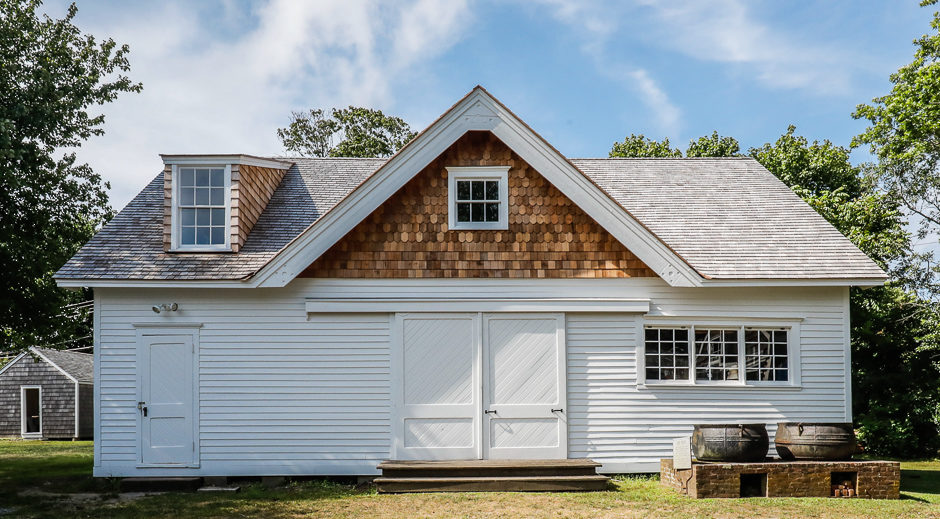
July 31, 2019
The Nugent Carriage House was built in the 1890s by Dr. John Nugent who owned the Rogers Mansion from 1889 to 1899. The sole “Village Street” structure that was not moved to the site, it originally had a ramp extending from the sliding doors to a drive leading to Meeting House Lane. The first in a line of prominent local physicians, Dr. Nugent was a member of Southampton Hospital’s first medical board. Both of his sons also practiced medicine in the area. The building currently houses the museum’s collection of whaling artifacts.
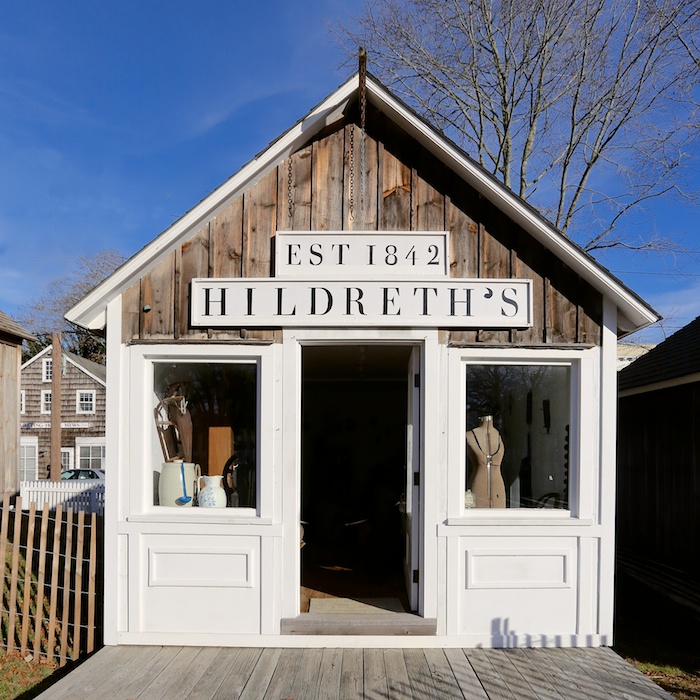
——————–
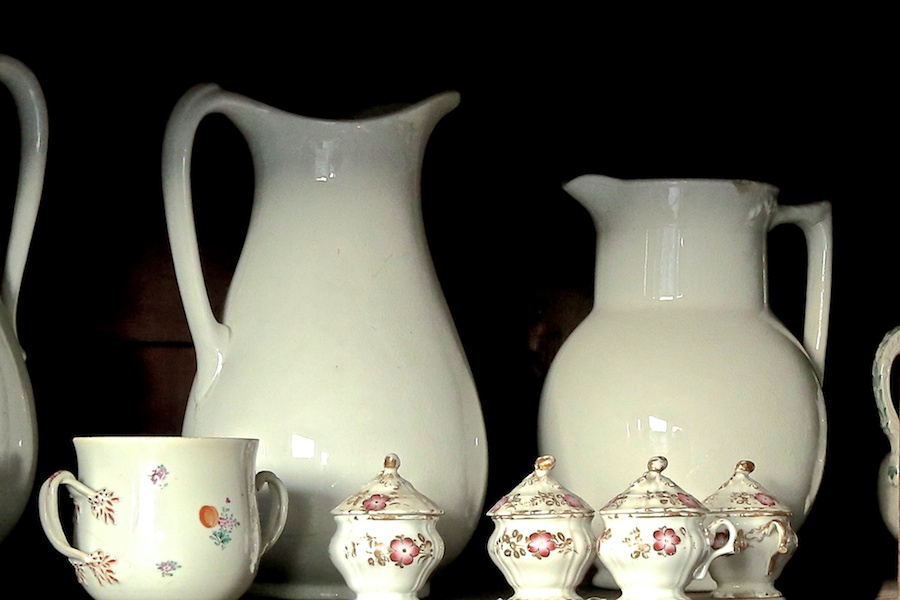
——————–
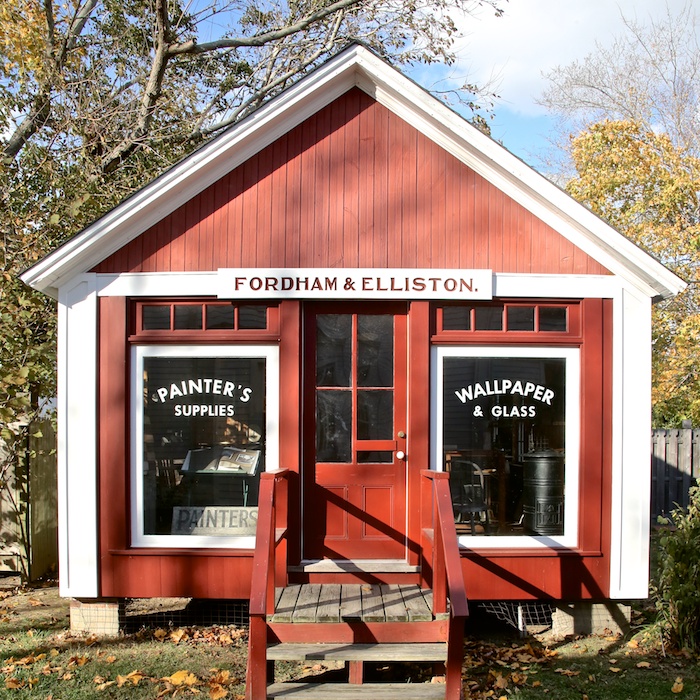
The Paint Shop, donated by James Nugent, arrived at the museum in 1987 from its original location on North Main Street. In the 19th century the building housed the Dunwell Paint Shop. In the 21st century it stands on the museum grounds as a replica of the Fordham and Elliston paint shop, which stood at 69 Jobs Lane from the late 19th to the late 20th century. Its interior boasts carefully preserved furnishings, equipment and paint stock from the early days of the business.
—————————————————————————————————-

The Sayre Barn was built in 1825 by the Huntting family and sold to Isaac Sayre a year later. Originally located at the corner of Main Street and Hampton Road, it housed Mr. Sayre’s livestock and stored goods. For many years it was known as the “Billboard Barn” because its location made its façade an ideal place to post signs and notices. In the 1930s, when it was owned by the Dimon family, it was made into an antiques store. After World War II the Dimon family gave the barn to the Colonial Society, which became the Southampton Historical Museum, and in 1952 it made the trip down Main Street to the museum property on Meeting House Lane. In 2010, considered seriously deteriorated, the barn was named to the Society for the Preservation of Long Island Antiquities’s list of endangered structures and a campaign was launched to restore it. In the spring of 2013, specialists in historic restoration Strada Baxter Design were given the task of returning the Sayre Barn to its original state. Archival postcard.
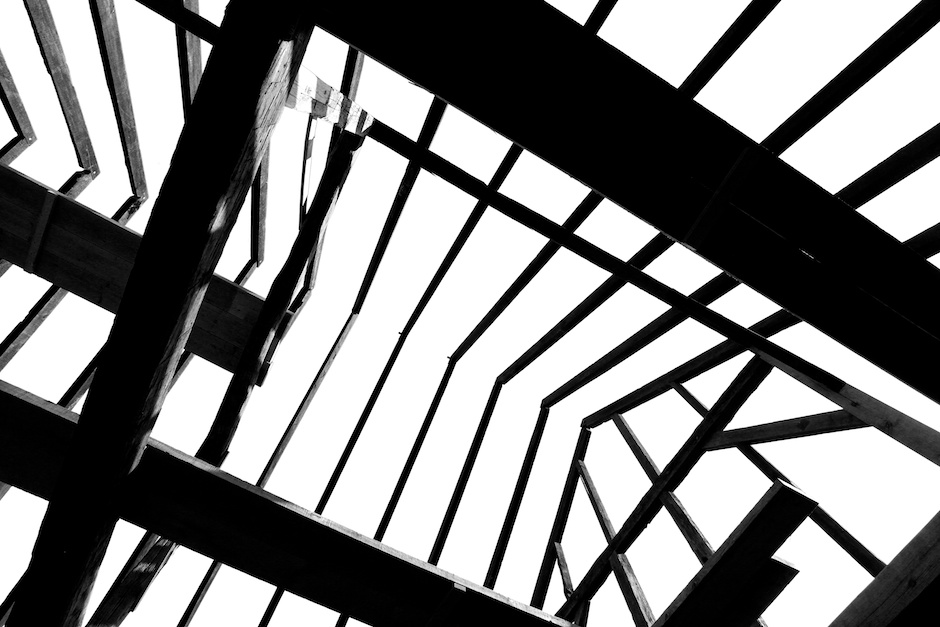
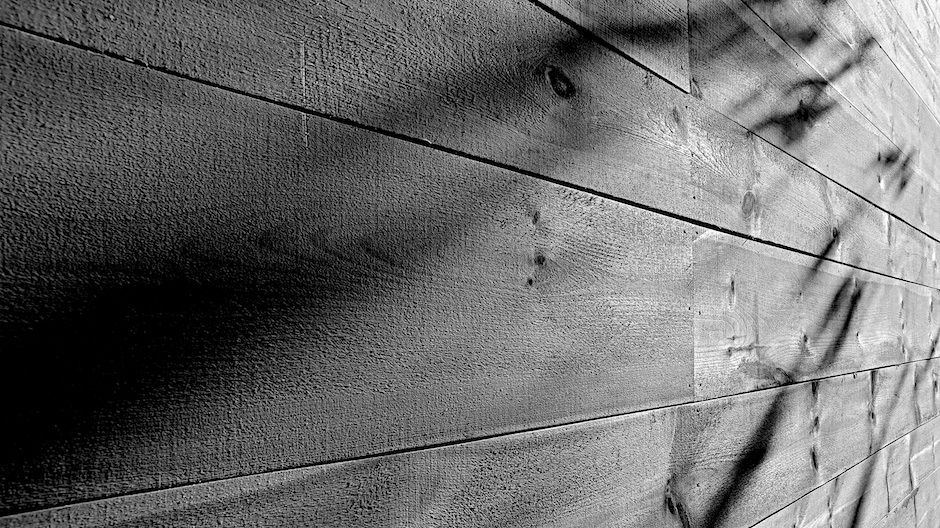

Visit: AAQ / Restoration — Sayre Barn, 1825
——————————————————————————————————–
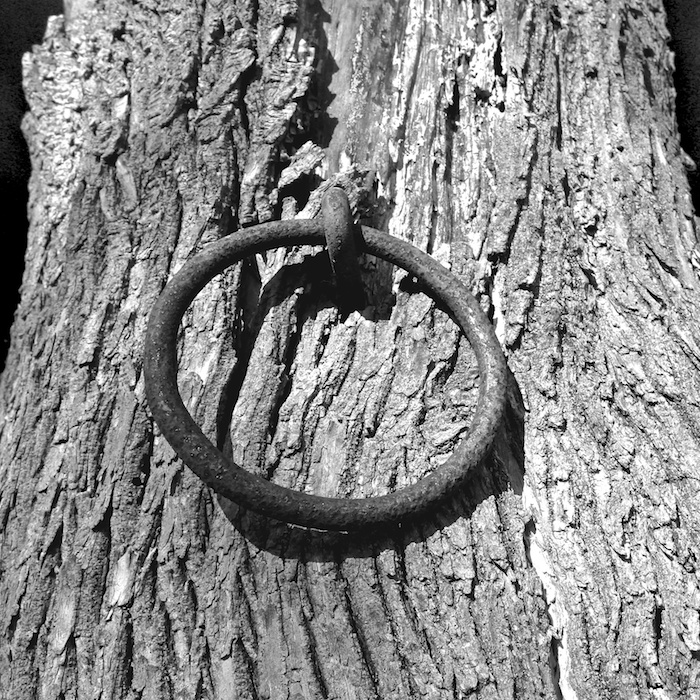
The Whipping Post – used in early Southampton to punish thieves and bad children, and also used for those accused of adultery and wife beating. In the early days of the settlement, two stocks, one pillory and whipping post were located at the corner of South Main Street and Jobs Lane and used for public punishment for wrongdoing.
>>>>>>>>>>>>>>>>>>>>>>> | >>>>>>>>>>>>>>>>>>>>>>>
Jobs Lane
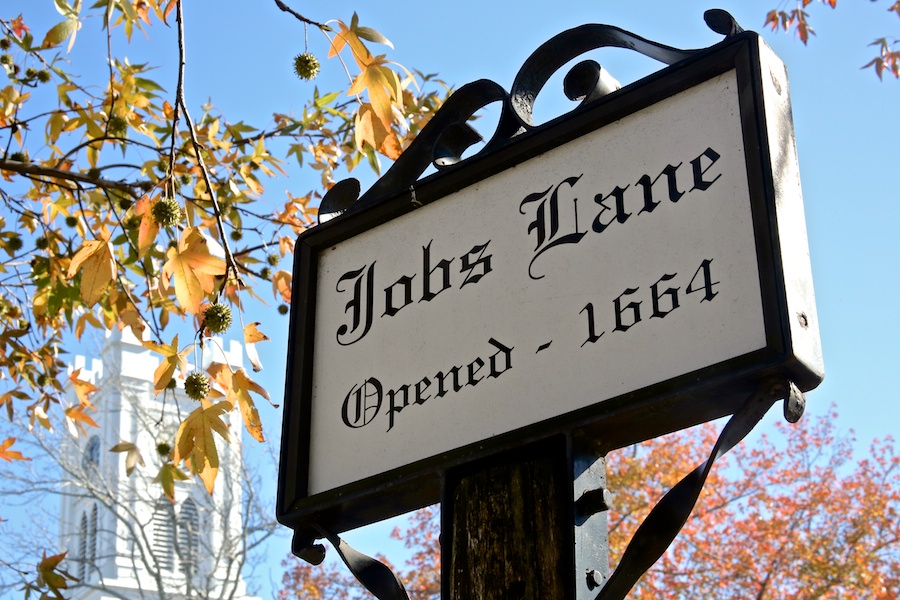
———————————————————————————————
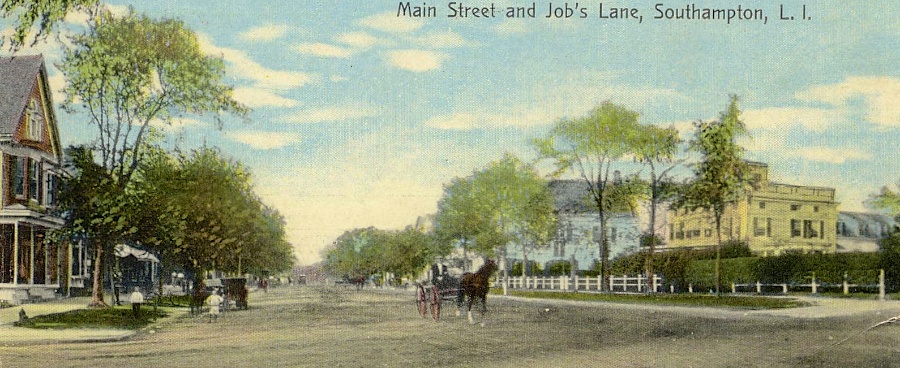
Main Street, looking north, with Corwith’s Pharmacy on the left and Rogers Mansion on the right.
Archival postcard (detail).

Jobs Lane, with Rogers Memorial Library on the left, Rogers Mansion in the distance, and the First Presbyterian Church
on the right. Archival postcard.
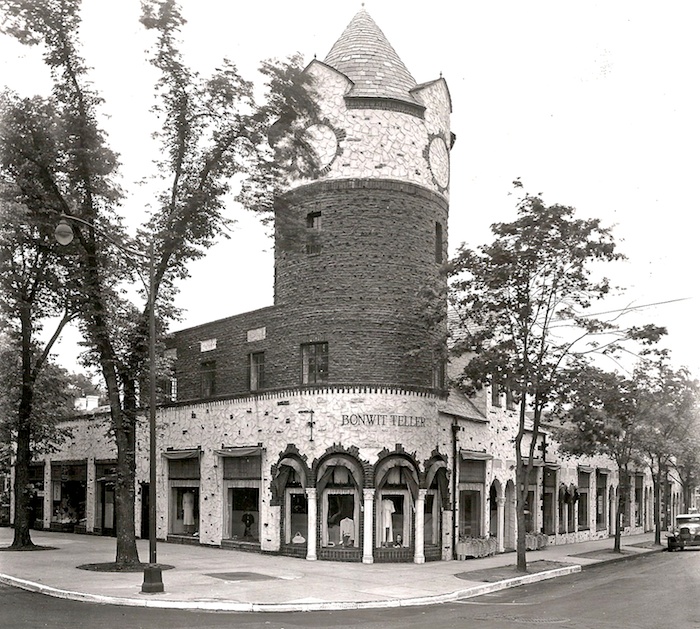
Corner of Jobs Lane & Main Street. New Southampton Shops, a Normandy farmhouse-style commercial building on the corner of Jobs Lane and South Main Street. B. Robert Swartburg, NYC, architect. Built in 1927. Archival photograph.
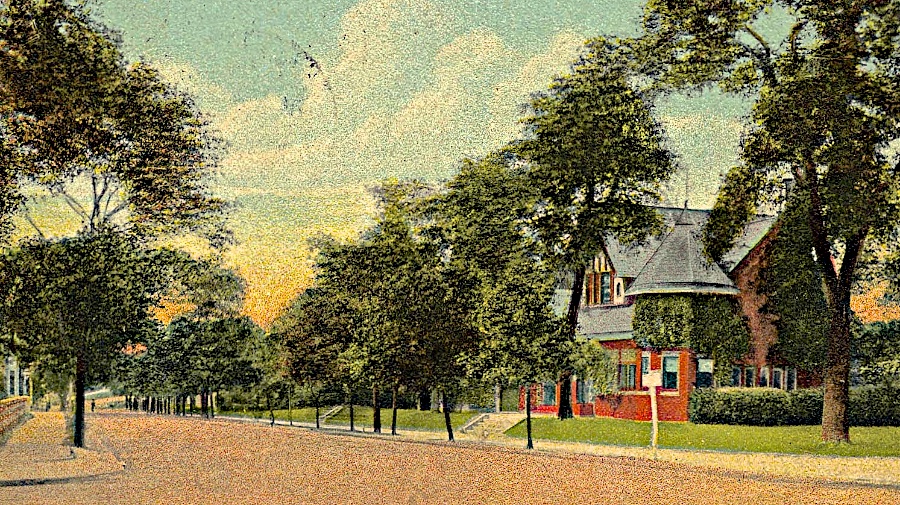
Jobs Lane. Archival postcard.

Rogers Memorial Library. Archival postcard.

Rogers Memorial Library, Jobs Lane. Archival postcard .
—————————————————————————————————————
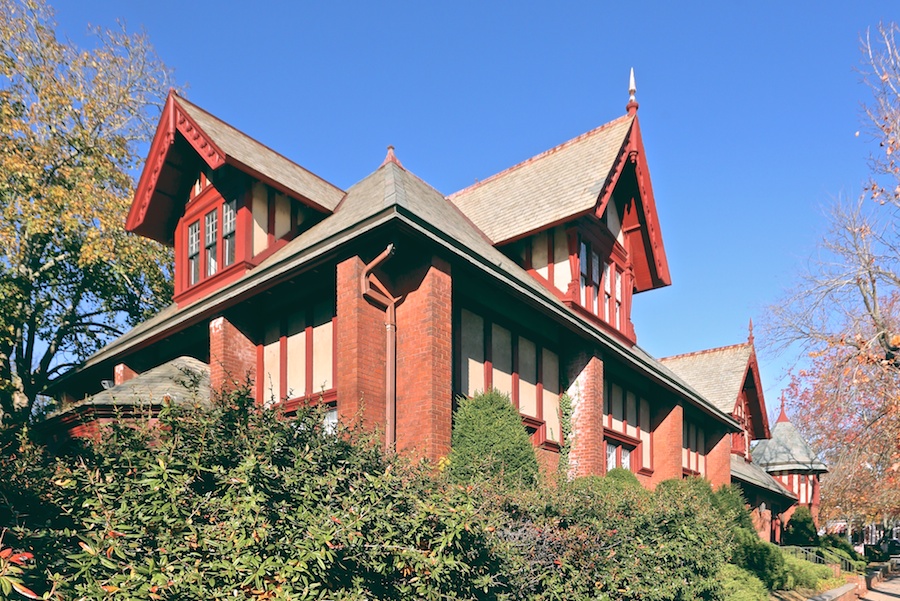
——————–
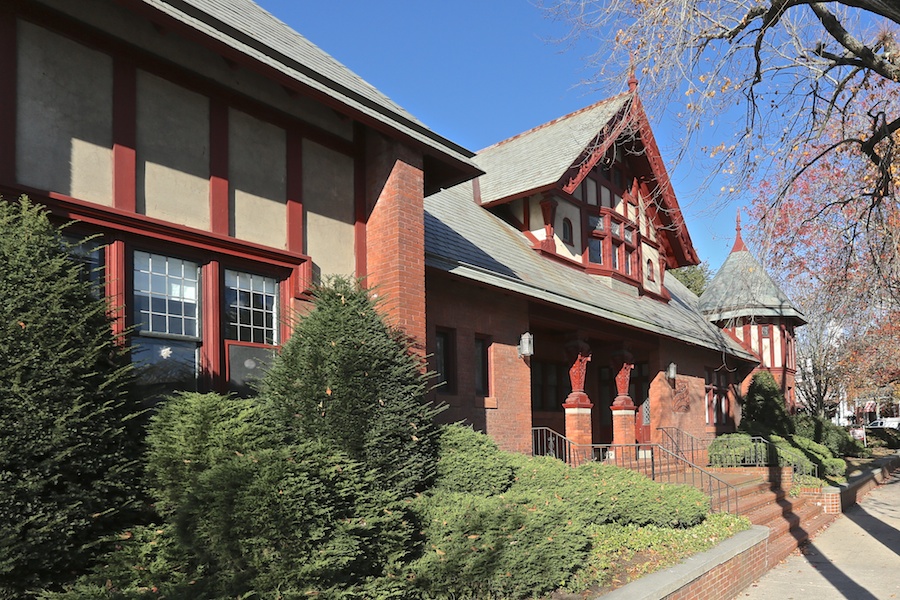
——————–
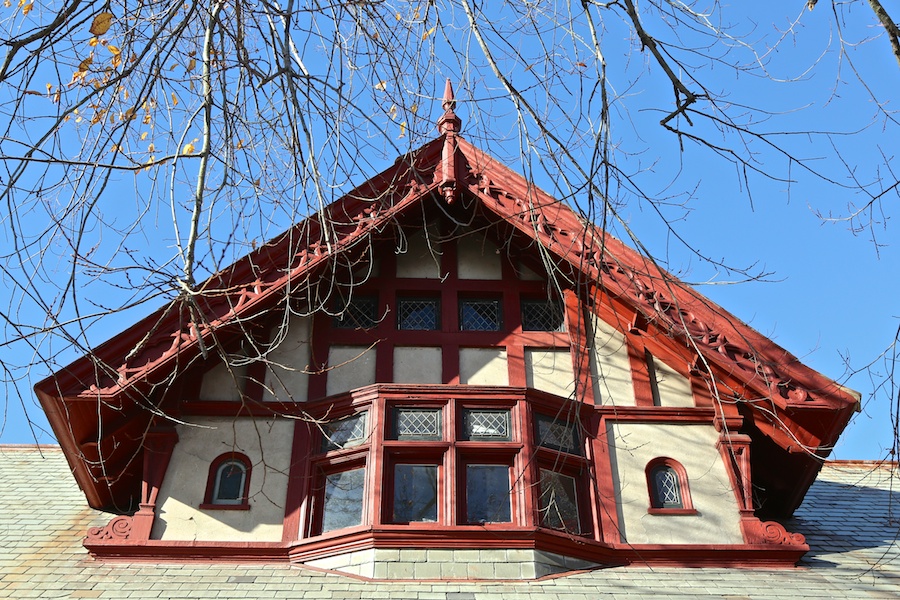
——————–

——————–
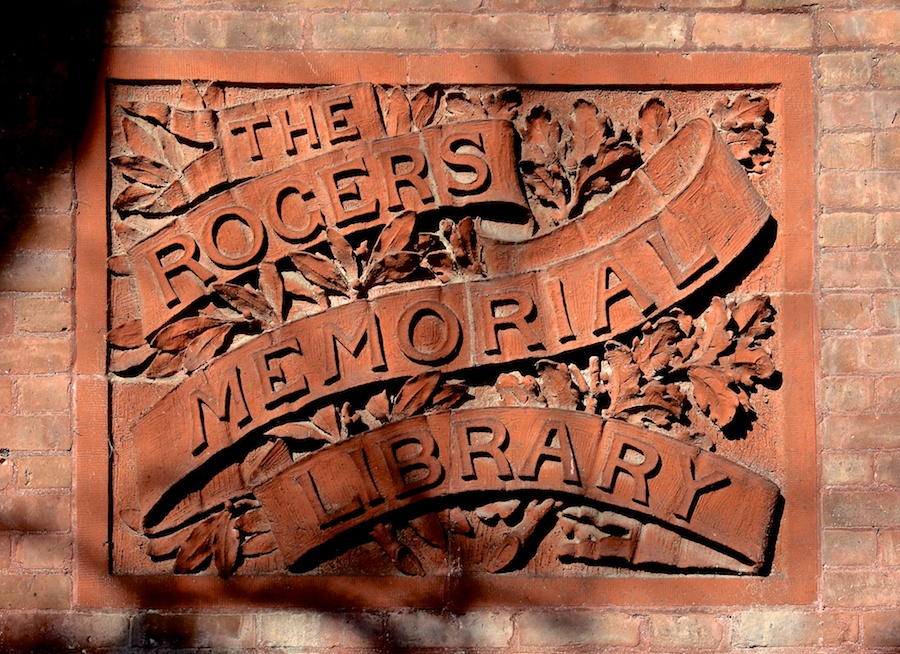
The Rogers Memorial Library, 1894. Robert Henderson Robertson, architect.
—————————————————————————————–
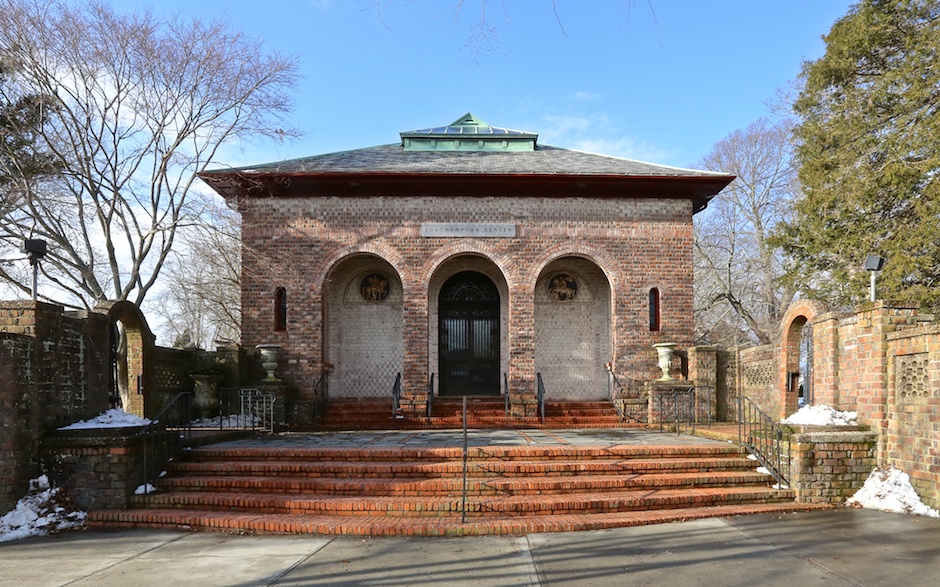
Samuel L. Parrish Art Museum, 1898.
The original idea for the museum came to Samuel Parrish, who had studied the Italian Renaissance at Harvard College, while he was on a trip through Italy in 1896 gathering pieces and reproductions of Greek and Roman sculpture. Parrish commissioned fellow Southampton summer resident Grosvenor Atterbury to design the museum.
——————————————————
Now home to the Southampton Center. “Plans are currently underway with world-renowned architecture firm Machado & Silvetti for a complete renovation and adaptive reuse of this historic property – bringing a piece of Southampton’s unique history into the modern era.” — Southampton Center.
Visit: www.southamptoncenter.org

——————–

——————–
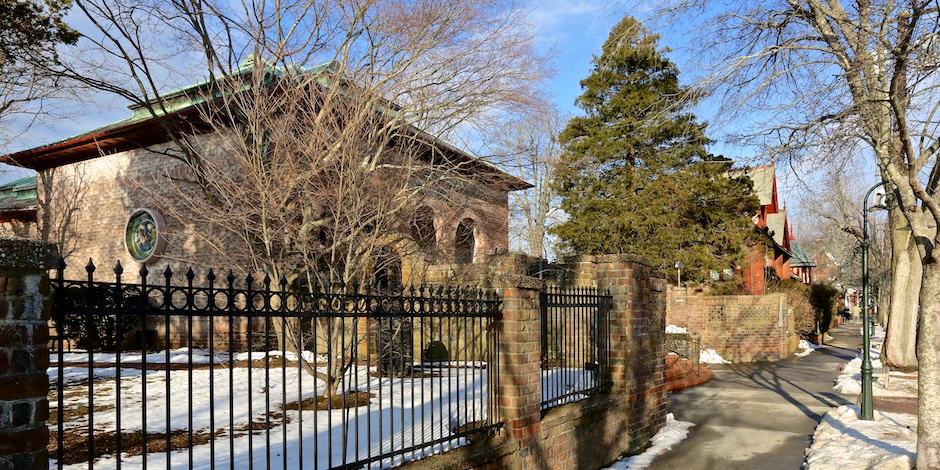
January 27, 2014
—————————————————————————————–

Hand-Colored Archival Postcard.
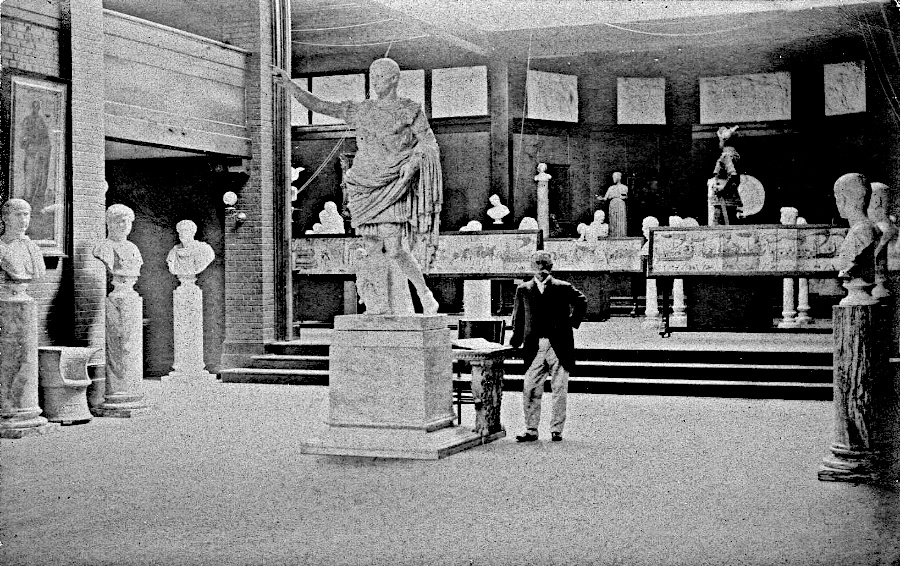
Samuel Longstreth Parrish standing inside his art museum.
Visit: AAQ/Portfolio/Preservation: Woodward Postcard Sampling
—————————————————————————————–

Bronze Bust of Samuel Longstreth Parrish by Hermon A. MacNeil.
Samuel Parrish, a wealthy New York attorney, made Southampton his adoptive home at the end of the 19th century and became one of its most active citizens and generous benefactors until his death in 1932. During the boom years at the dawn of the 20th century, he was involved in every major civic project. He donated land for Southampton Hospital, helped to establish the Rogers Memorial Library, served briefly as village president (mayor) and founded the Parrish Art Museum, which he considered his crowning achievement. He commissioned Stanford White to build a house for his mother on First Neck Lane and made many improvements to the Rogers Mansion, which was his home from 1899 until his death. — Copy courtesy of the Southampton Historical Museum.
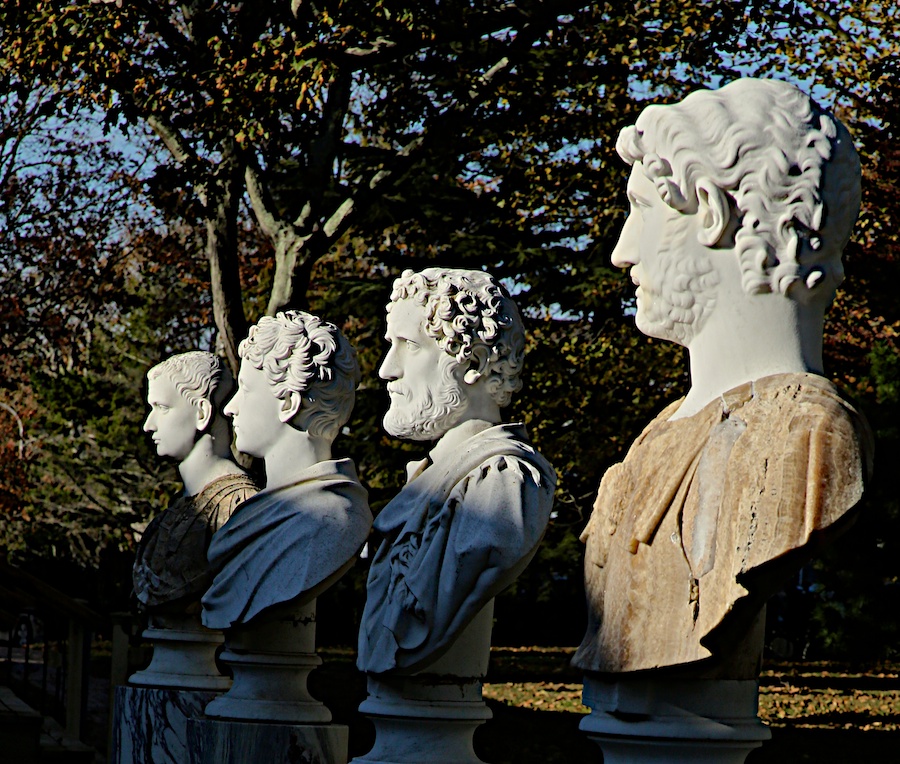
The Roman Caesars facing each other on the south side of the former Parrish Art Museum (present cultural center) are marble copies of originals in the Vatican, Rome. Samuel Longstreth Parrish brought them to Southampton to install in his art museum, which opened in 1898 with his collection of Renaissance paintings and plaster casts of classical sculpture.
—————————————————————————————–
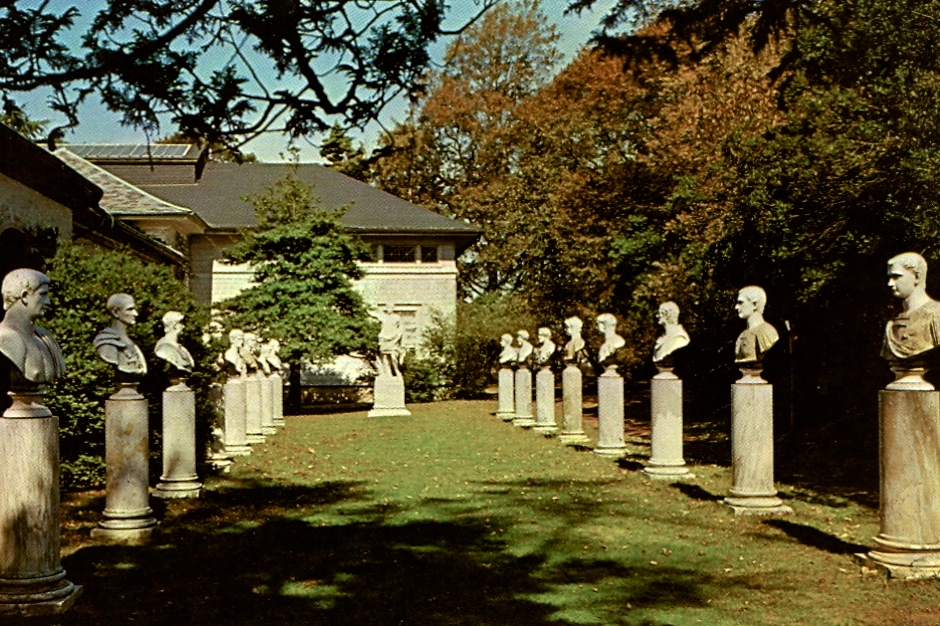
“Parrish Art Museum Statuary, Southampton, Long Island, N.Y.” Photo by Milt Price. Archival postcard.
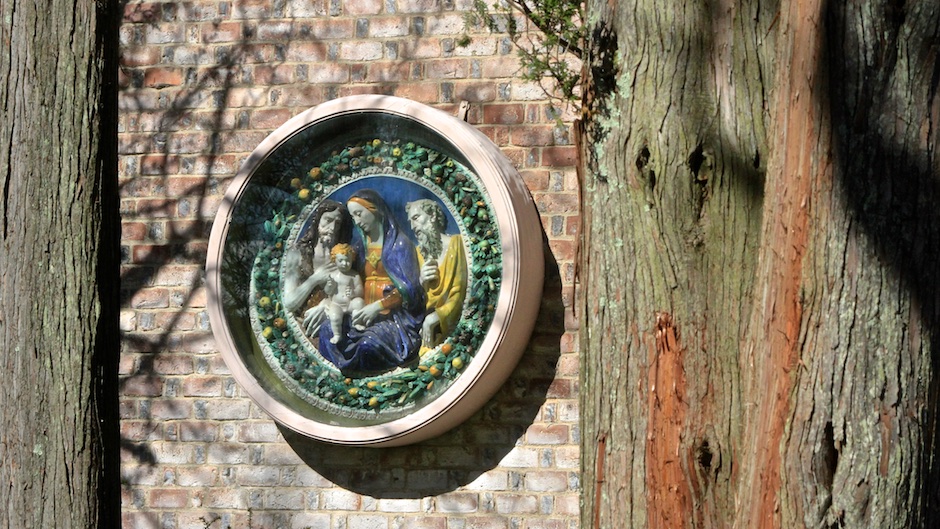

—————————————————————————————–
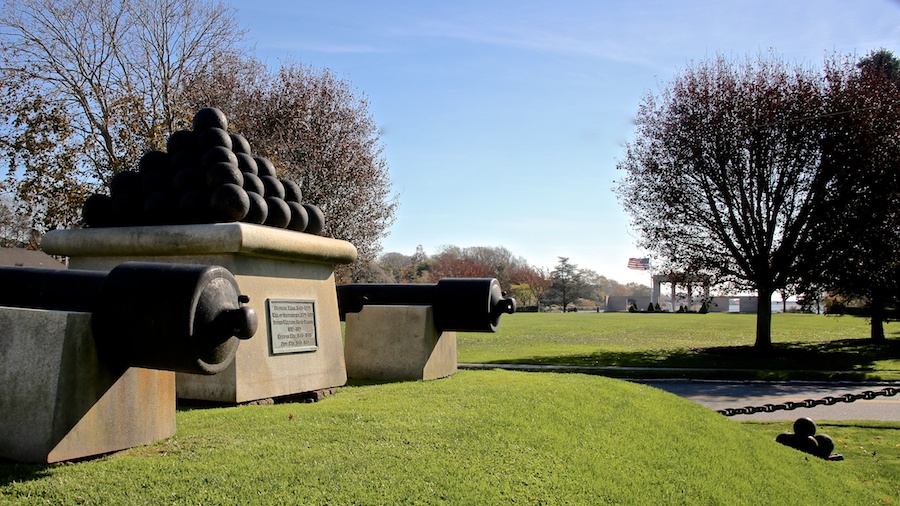
Monument Square, Agawam Park, World War Memorial, Agawam Lake.

Plaque on site.

For flagpoles with a gaff, the national ensign shall be displayed from the gaff and the personal flag from the peak of the flagpole. — Plaque on site.
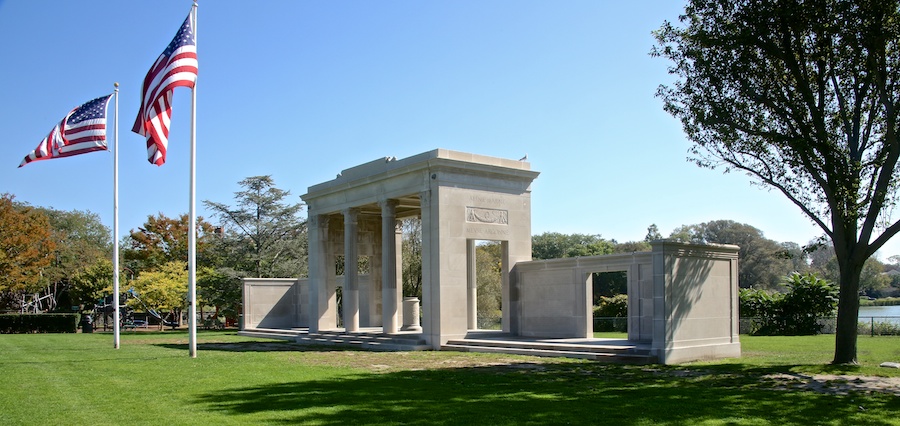
World War Memorial, dedicated August 19,1923. William Edgar Moran, Architect.

July 28, 2016
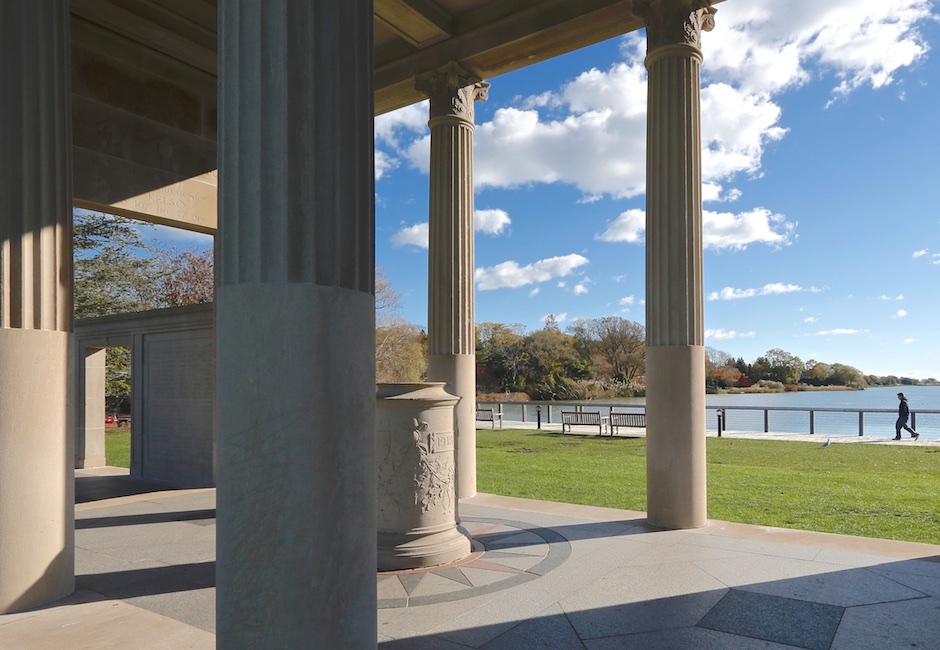
November 4, 2016
Visit: AAQ / Landmarks / World War Memorial, 1923, Agawam Park, Southampton
________________
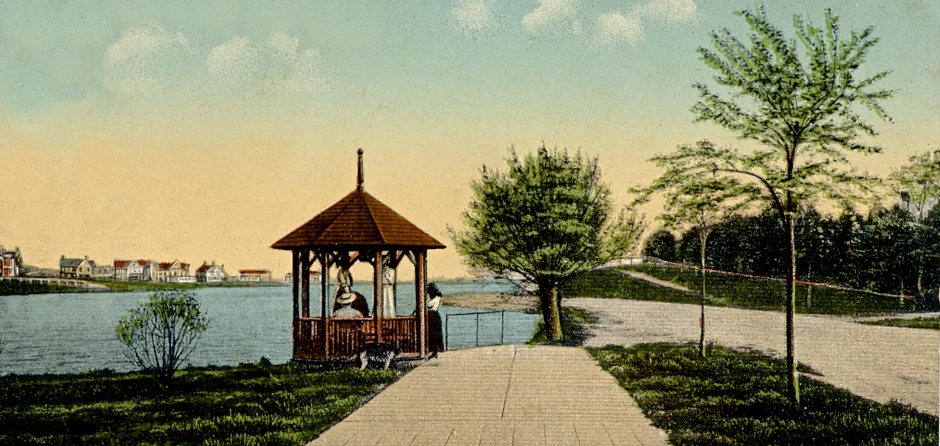
The Agawam Park that exists today was created over time from what was originally a dismal swamp known locally as “Hell’s Half Acre.” Improvements came gradually as the swamp slowly filled. In 1916, Colonel Robert M. Thompson, a prominent summer resident, turned over to Southampton Hospital the deed to Agawam Hall, the village’s all-purpose meeting place at the foot of Jobs Lane. At the same time the adjacent Agawam Park grounds, running along Pond Lane from Jobs Lane to the lake, went to the village and plans were made to join the two properties. The real transformation came with the dedication of the war memorial in 1923. Since that time the park has served as a fairground, a backdrop for outdoor entertainments, a playground and a place for quiet contemplation. Copy & archival postcard (Head of Lake Agawam, Southampton, L.I./cropped) courtesy of Southampton Historical Museum.
————————————————————————————————————————-
>>>>>>>>>>>>>>>>>>>>>>> | >>>>>>>>>>>>>>>>>>>>>>>
South Main Street
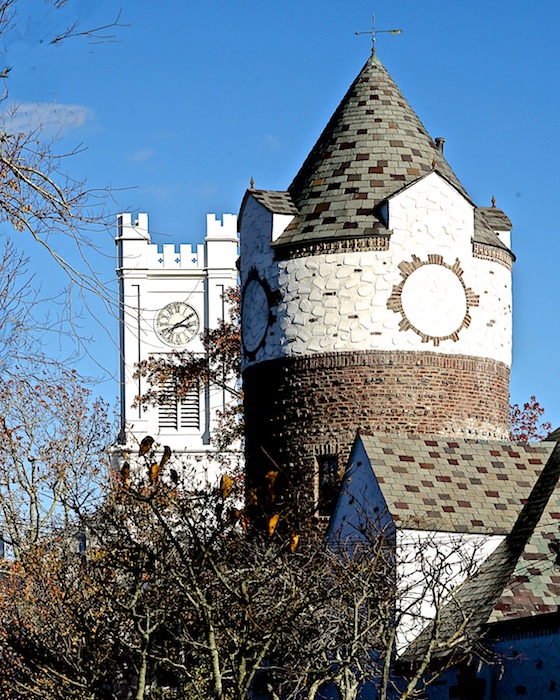
——————————
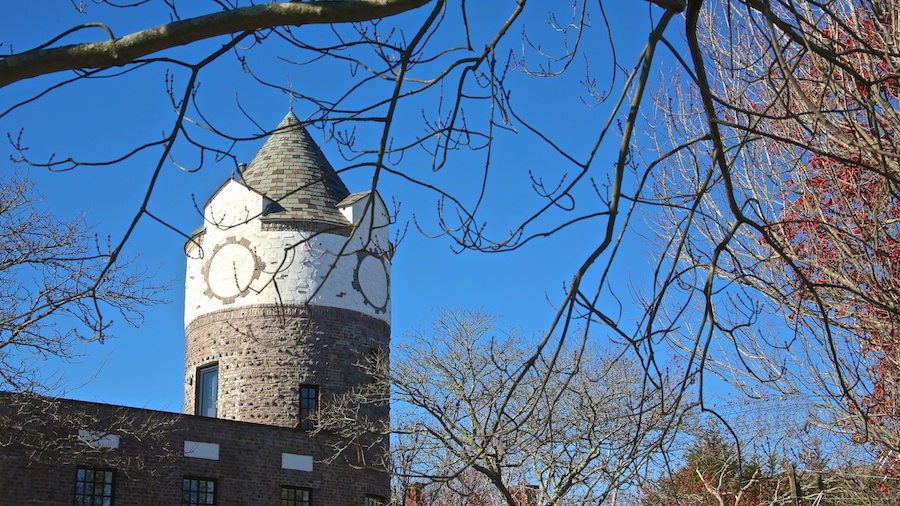
>>>>>>>>>>>>>>>>>>>>>>>> | >>>>>>>>>>>>>>>>>>>>>>>
South Main Street

First Presbyterian Church, 1843
“The Congregation of this church was ‘gathered and constituted according to the mind of Christe’ in the spring of 1640. The first church was a rude thatched building which also served for court and town meetings, and was located about one mile east of this spot. Successor church structures were build in various locations on ‘Ye Main Street’ in 1653 and 1707. This House of Worship was erected in 1843, with roots in the reformed tradition and distinguished ‘by name of stile of Presbiterians’ as early as 1707. This is considered by some historians to be the oldest Presbyterian Congregation in America.” — Plaque on site.
Visit: First Presbyterian Church, Southampton
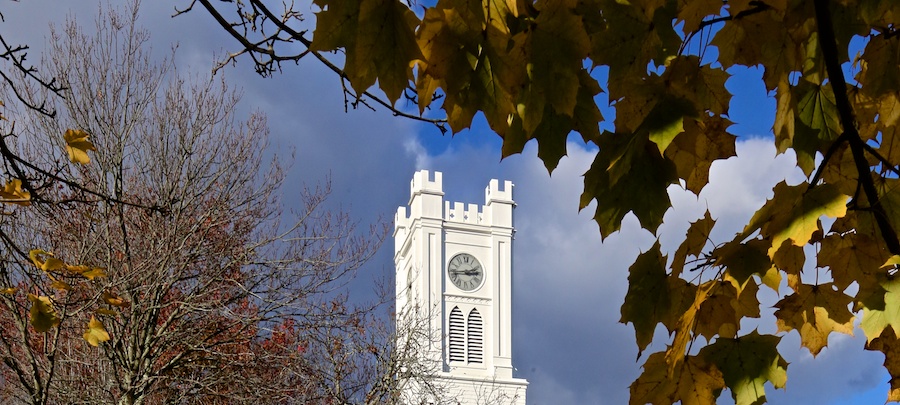
——————–

——————–
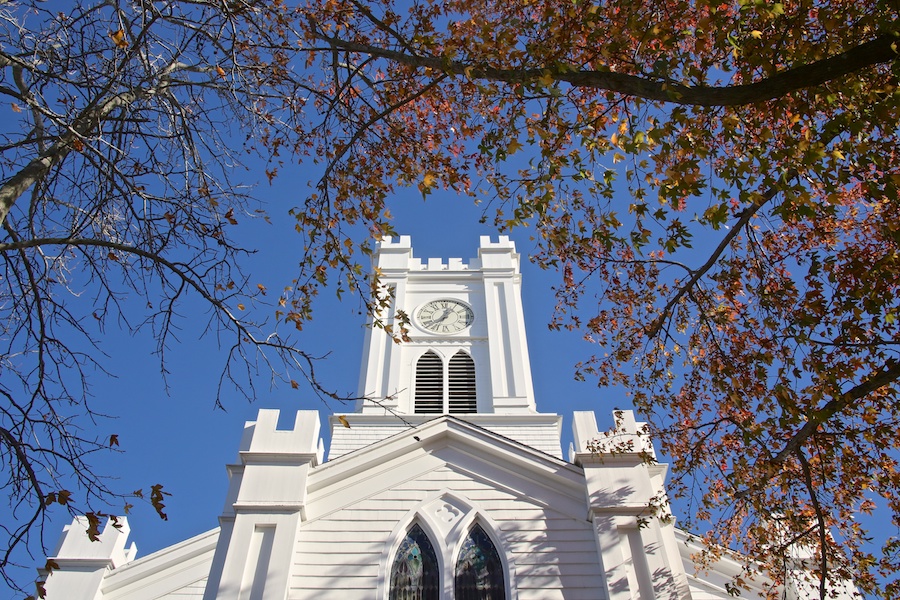
———————————————————————————————–
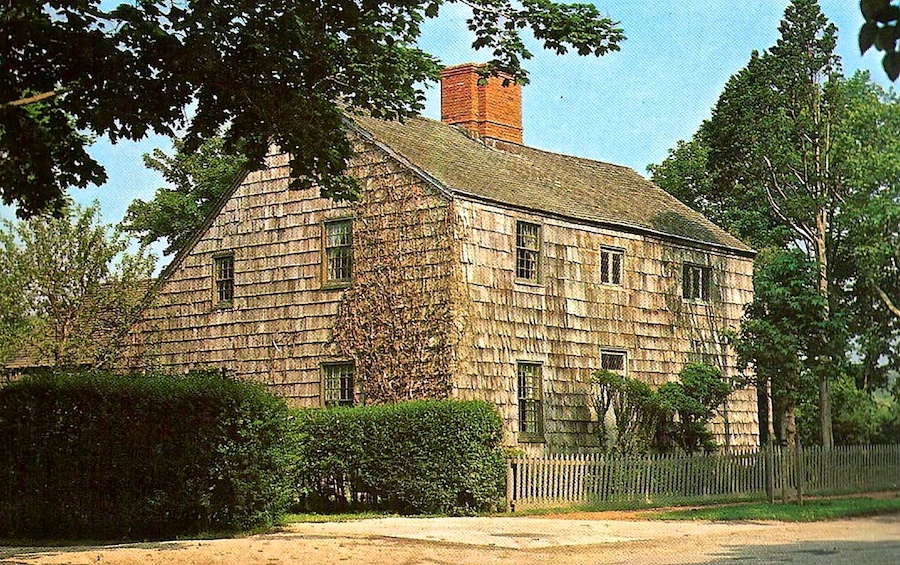
Halsey House, archival postcard.
Visit AAQ/Landmarks:Thomas Halsey Homestead
Visit: Southampton Historical Museum
———————————————————————————————-
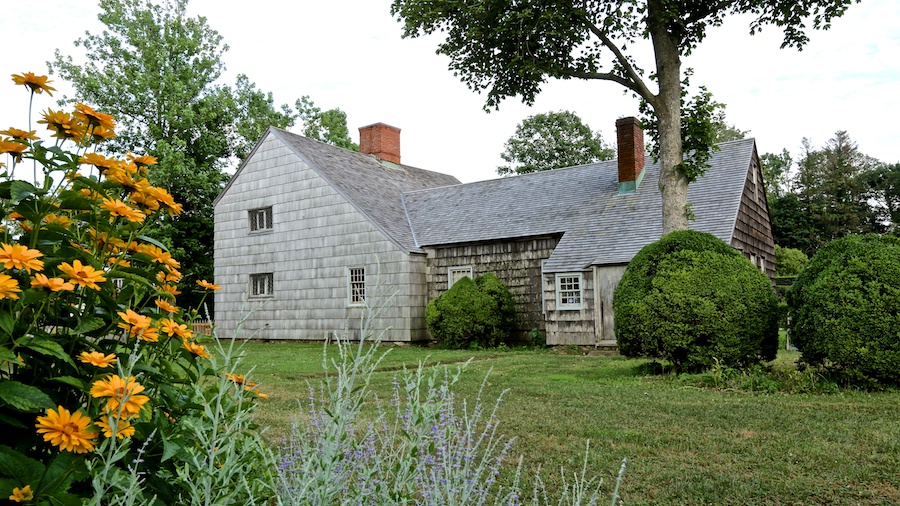
Thomas Halsey and his family, along with eight other Puritan families, left Lynn, Massachusetts, seeking religious freedom. They landed in Southampton in 1640 and settled on Old Town Road. Thomas Halsey and his wife Elizabeth homesteaded this property in 1648. This saltbox-style house was built beginning in 1680. — Plaque on site.

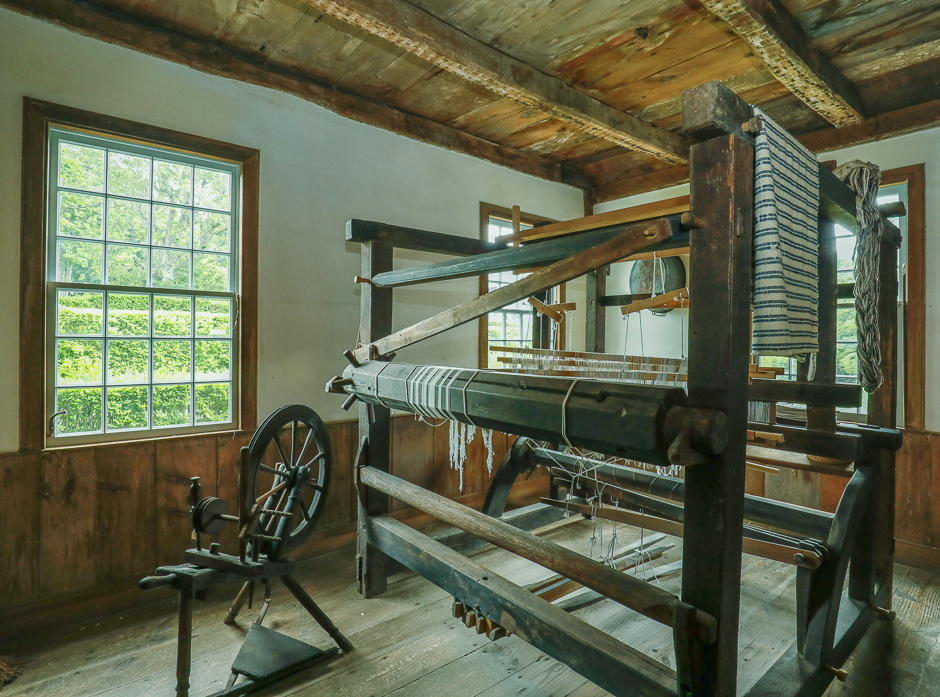
June 29, 2018
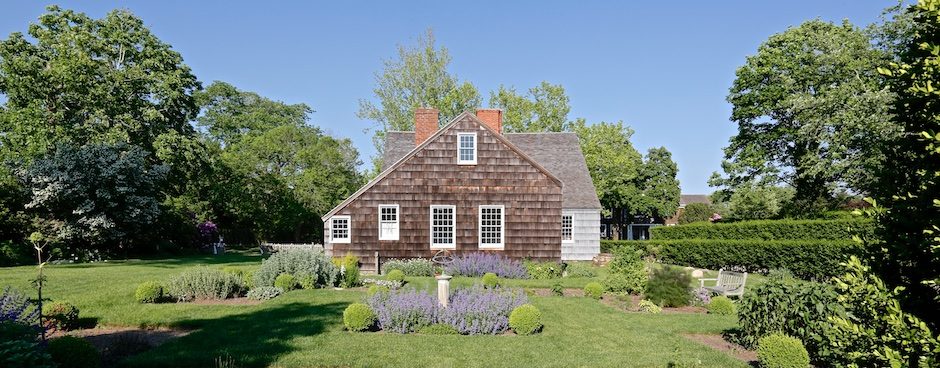
June 6, 2016
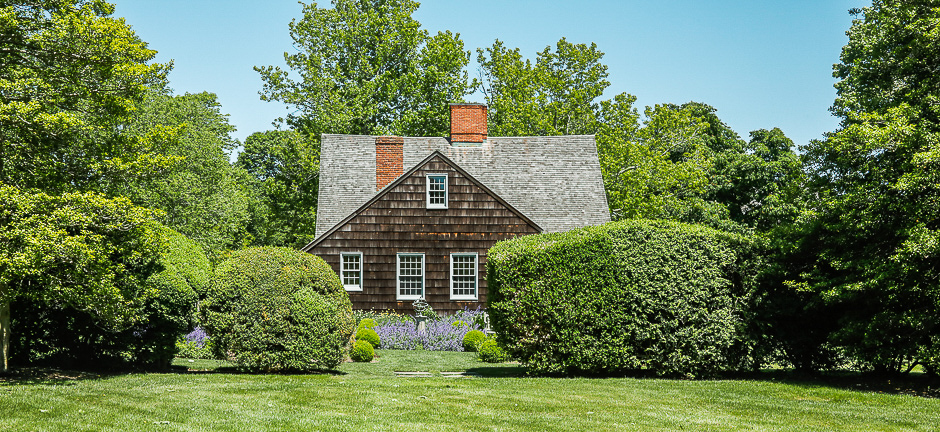
June 29, 2018
——————————————————————————————–

Halsey Homestead Kitchen – archival postcard courtesy of the Southampton Historical Museum.
—————————————————————————————————–
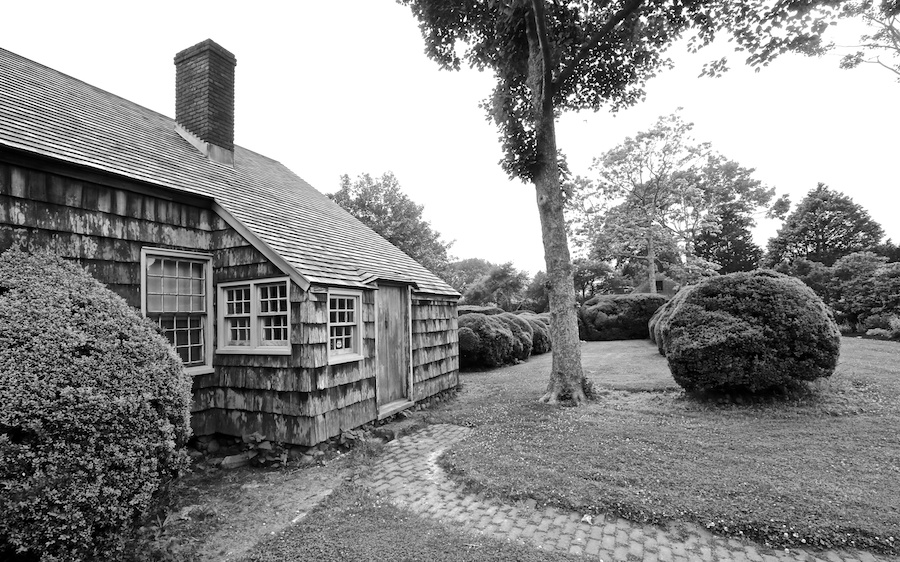
——————–

>>>>>>>>>>>>>>>>>>>>>>>> | >>>>>>>>>>>>>>>>>>>>>>>>
Copy & archival images courtesy of Southampton Historical Museum.
www.southamptonhistoricalmuseum.org
Photos/Copyright, except postcards & archival photographs, Jeff Heatley.
————————- Visit On Site ———————
Lake Agawam Tour — Three Mile Loop
Woodward Local Postcard Collection
_____________________________________________________________________

